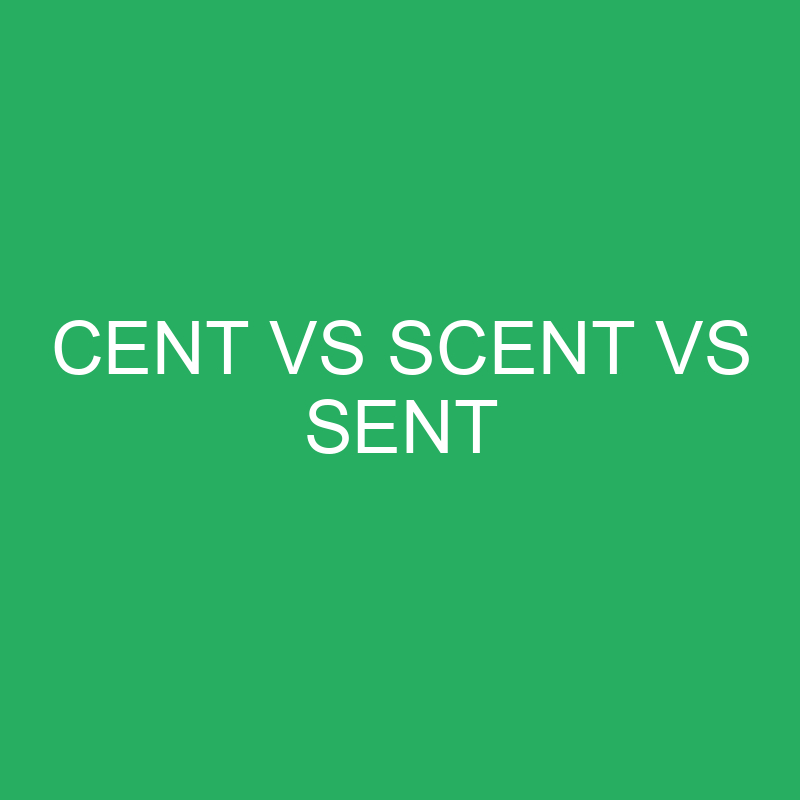“Cent,” “Scent,” and “Sent” – A Journey Through Coinage, Odor, and Communication
The English language, with its diverse vocabulary, often introduces words that sound alike but carry distinct meanings, adding a layer of complexity to communication. A notable trio in this linguistic symphony includes “cent,” “scent,” and “sent.” While these words may be homophones, they diverge in their applications, encompassing realms from currency to fragrances and the past tense of communication. In this exploration, we will delve into the unique meanings and usages of each term.
Post Contents
Cent – Penny Coin:
Definition: “Cent” is a noun that primarily refers to a monetary unit equal to one-hundredth of a basic monetary unit, especially in the United States and several other countries. It is commonly used in the context of currency, representing a small denomination.
Examples:
- The candy cost twenty-five cents at the store.
- In the United States, a dollar is equivalent to one hundred cents.
Usage: In everyday conversations and financial transactions, “cent” plays a crucial role, symbolizing a fraction of the primary unit of currency, often used for pricing and accounting.
Scent – An Odor:
Definition: As a noun, “scent” refers to a distinctive, often pleasant or unpleasant, smell or odor. It can be used to describe the characteristic fragrance or aroma associated with various substances, objects, or environments.
Examples:
- The scent of blooming flowers filled the air in the garden.
- She could detect the scent of freshly baked bread from the nearby bakery.
Usage: “Scent” finds its application in sensory experiences, describing the olfactory qualities of different elements in nature, cuisine, and daily life. It conveys the richness and variety of aromas that contribute to our perceptions of the world.
Sent – Past Tense of Send:
Definition: “Sent” is the past tense and past participle of the verb “send.” It signifies the action of causing something to go or be taken to a particular destination or recipient, often involving the act of conveying a message or item from one person or place to another.
Examples:
- She sent a heartfelt letter to her friend who lived overseas.
- The company sent out invitations to the product launch event.
Usage: Used primarily in the context of communication and logistics, “sent” highlights the act of dispatching or conveying, whether it be messages, items, or information, from one point to another.
Homophones: The trio of “cent,” “scent,” and “sent” exemplifies homophones – words that share the same pronunciation but have different meanings. The challenge lies in recognizing the intended usage based on context, whether in written or spoken form.
Common Pitfalls and Clarifications:
- Scent vs. Sent: Odor vs. Past Tense:
- Incorrect: “The beautiful scent was sent across the room.”
- Correct: “The beautiful scent wafted across the room.”
- Cent vs. Scent: Coin vs. Odor:
- Incorrect: “The storekeeper noticed the pleasant cent of the flowers.”
- Correct: “The storekeeper noticed the pleasant scent of the flowers.”
Conclusion:
In the symphony of language, “cent,” “scent,” and “sent” harmonize in pronunciation but diverge in meaning, showcasing the linguistic richness of English. From the tangible realm of currency to the ephemeral world of fragrances and the past tense of sending messages, each word serves a unique purpose. A
rmed with a keen understanding of their distinctions, language enthusiasts can navigate the aromatic nuances embedded in these homophones, ensuring clarity and precision in communication. So, whether appreciating the scent of nature, discussing financial transactions, or recounting past communications, the distinctions between “cent,” “scent,” and “sent” add depth to the linguistic tapestry.
